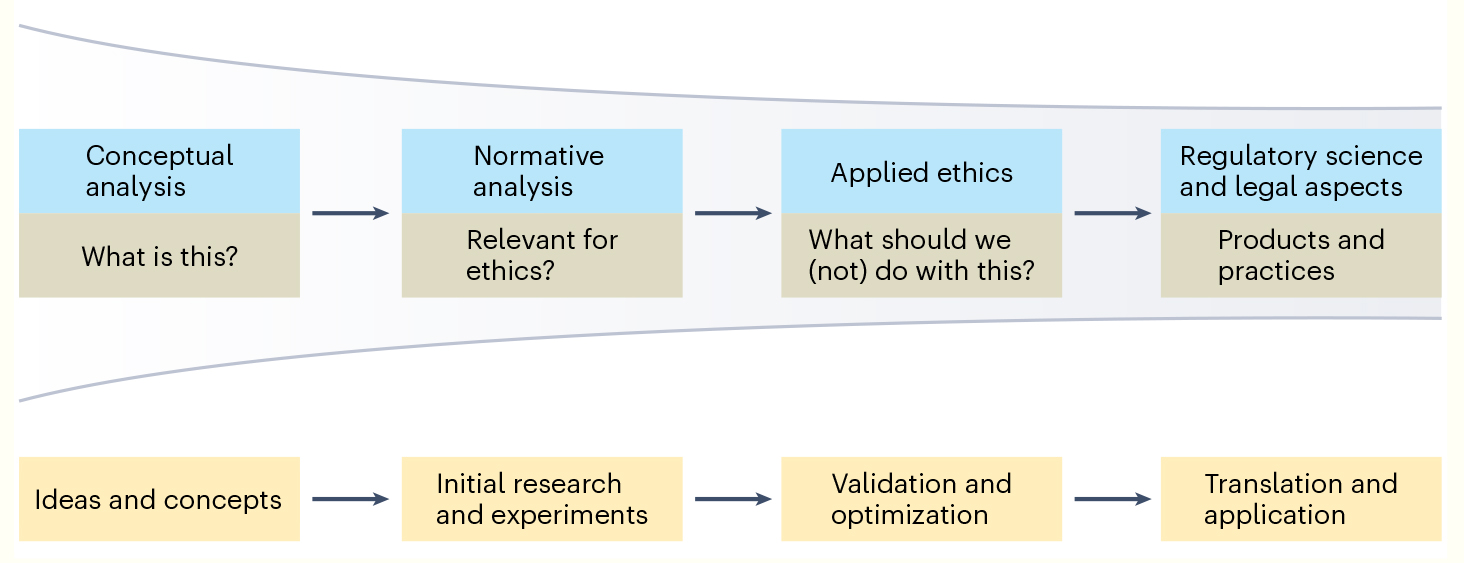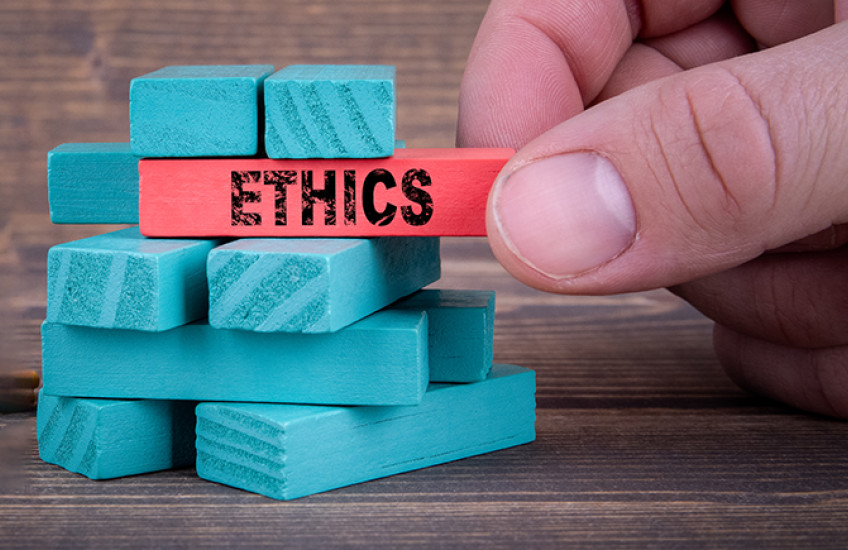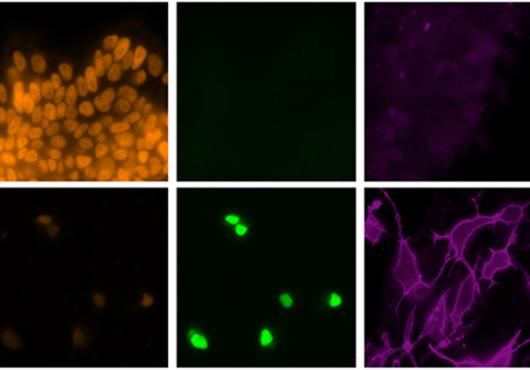At a glance
New model calls for life science researchers to partner with ethicists and philosophers from early stages of idea development to product creation.
Model aims to change common practice in which ethicists do not have a chance to weigh in on new discoveries and technologies until they are already out in the world.
Work builds on successful collaborations at Harvard Medical School and Wyss Institute.
New science often raises new ethical questions. Since scientific discoveries can change how we understand and live in the world, their ethical implications can influence society at large, affect a field’s public acceptance, and shape the creation of technologies that sometimes require new regulation.
But historically, ethicists have been given the opportunity to analyze advances in the life sciences only after those advances have started to affect the real world. This often results in ethical controversies gaining momentum before bioethicists are called upon to assess the implications of a discovery, identify moments at which crucial decisions need to be made, and suggest course corrections.
A team at Harvard Medical School and the Wyss Institute for Biologically Inspired Engineering at Harvard University has now presented a solution in the form of a model called collaborative ethics.
The model calls for life science researchers to partner with ethicists and philosophers from the early stages of idea development all the way through to product creation, investigating philosophically and ethically relevant implications and identifying actionable decision points.
Authors Jeantine Lunshof, lecturer on global health and social medicine, part-time, at HMS and collaborative ethics lead at the Wyss Institute, and Julia Rijssenbeek, a graduate student at Wageningen University & Research in the Netherlands who did a PhD internship at the Wyss Institute, describe the model in Nature Methods on June 20.
“We are convinced that there is […] a place for ethics in scientific research, not about science or after scientific breakthroughs,” Lunshof and Rijssenbeek wrote in the paper.
“It doesn’t suffice that a philosopher or an ethicist occasionally reviews a research group’s work as an outsider,” Rijssenbeek said. “It is essential that they become actual members of project teams to facilitate meaningful reflections during the scientific process instead of when it has been concluded. This immensely facilitates the exchange of thoughts in both directions, philosophical and ethical innovation, and decision-making processes that enable responsible research and innovation towards life-changing technologies.”
Four steps for ethics integration
The model describes four steps:
- Conceptual analysis: Ask the question, “What is it?” For instance, are biobots — tiny, computer-designed living organisms with programmed behaviors built from animal or human cells — organisms, robots, or machines?
- Normative analysis: This step examines the question of whether certain research raises any ethical concerns.
- Applied ethics: Similar to a bioethicist’s role, this step applies ethical theories to assess the real-world effect of technology developments such as the use of animals in research, the provenance of human biological specimens, questions of privacy and consent, the benefits and risks of new technologies such as genome editing for patients, and the justification of gain-of-function research that could lead to new antimicrobials but also result in enhanced pathogens. This step also considers whether a beneficial finding that also carries risk of harm should be published at all — a precaution that would help prevent misuse.
- Regulatory science and legal aspects: Researchers and ethicists team up with business development and technology transfer experts to analyze how a technology can be translated into real-world applications by a spinoff or through licensing by industry.
These steps can be applied to translational research in any academic environment, Lunshof said.

Building on success at HMS
Lunshof has collaborated with researchers at HMS and the Wyss Institute for more than 15 years. She and Rijssenbeek used examples from this work to illustrate how the ethics model has already been successfully applied.
Since joining the lab of George Church, the Robert Winthrop Professor of Genetics in the Blavatnik Institute at HMS and core faculty member of the Wyss Institute, in 2006, Lunshof — who holds a PhD in philosophy and health law — has applied her philosophical and ethical work to Church’s Personal Genome Project, which aims to sequence and publicize the complete genomes and medical records of 100,000 volunteers, new realities of genome engineering, the creation of chimeras from cells that originate from different organisms, and other disruptive advances. Her participation helped pave the way toward a more balanced public perception of the research.
Other “hot topic” ethical areas that Lunshof has worked on at Harvard include:
- The Brainstorm Project, part of the National Institutes of Health’s BRAIN Initiative neuroethics program, where she helped create an ethically recommendable path forward for “brain organoids” as models for human brain development and brain disease.
- Biobots, which do not fit into any traditional ethical category and raise important questions regarding their identities and the researchers’ intentions and goals.
These and other projects have cemented Lunshof’s conviction that “because science and technology development are progressing at an ever-higher speed and are globalizing rapidly, real-time collaboration between researchers and ethicists becomes vital. It enables a learning curve and necessary adjustments in the research process, as well as the development of missing ethical approaches and the revision of ethics positions.”
Adapted from a Wyss Institute news release.
Authorship, funding, disclosures
Rijssenbeek received funding through the Dutch Research Council (NWO) Ethics of Socially Disruptive Technologies program (grant 024.004.031).





